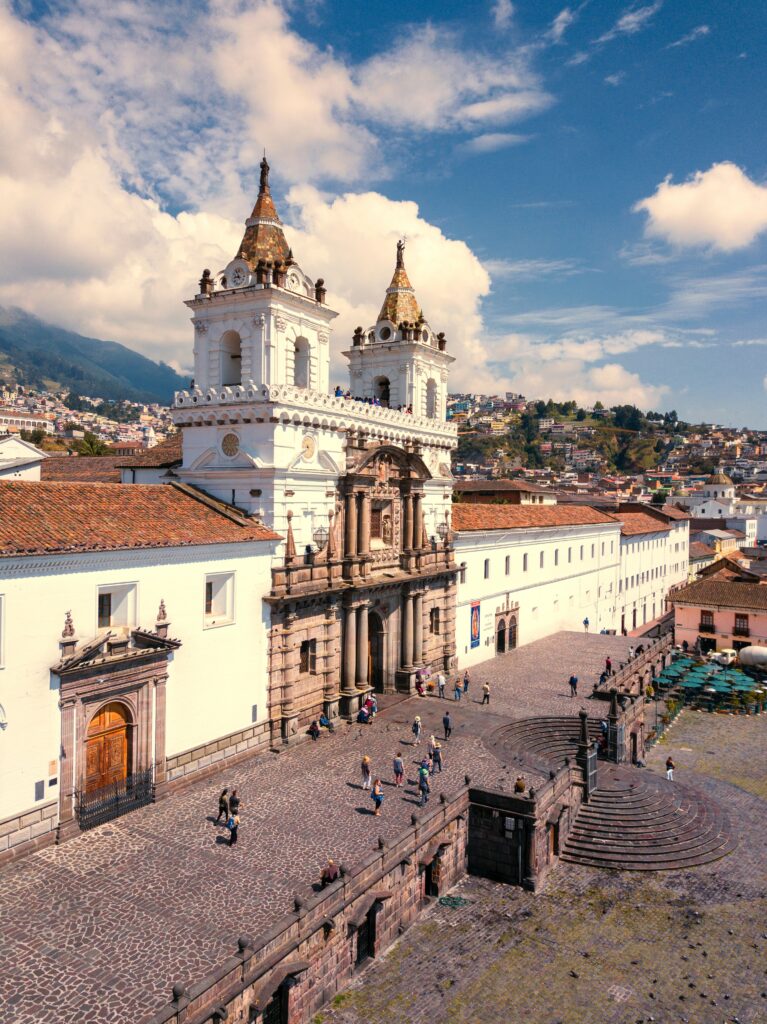Disclaimer: This post contains affiliate links. At no cost to you, I might earn a small commission if you make a purchase through the links in this article.
Are you curious to know whether Quito, Ecuador is safe? This article has all the information you need!
Many people might be tempted to answer “no” right away because they tend to think of this beautiful South American city as dangerous as the news shows us.
But in reality, Quito is a safe place to be. Home to one of the best preserved centers in Americas, it’s full of fascinating history and culture. While you still need to follow standard safety precautions in the Ecuador capital, it’s no different than any other place.
This post will shed some light on Quito safety, with tips for both tourists and locals. So, if you are planning a trip to the capital of Ecuador, keep on reading!
How safe is Quito?
The city is safe for locals and tourists, as long as you follow basic precautions. Quito boasts a safety profile comparable to any other major South American capital.
But this doesn’t mean Quito is devoid of safety concerns altogether.
Like any urban environment, Quito has its safety issues, including petty crime, pickpocketing. More serious crimes do occur occasionally (particularly at night).
However, these instances are not the norm, and the local authorities are trying their best to keep tourists safe.
The key to a safe and enjoyable stay in Quito is staying vigilant, respecting local customs, and following safety precautions, whether you are a solo traveler or visiting with a group of friends or family.
With that said, don’t let any concerns deter you. Because Quito is waiting for you with open arms!
✅ BOOK A PRIVATE TRANSFER FROM QUITO AIRPORT TO YOUR HOTEL
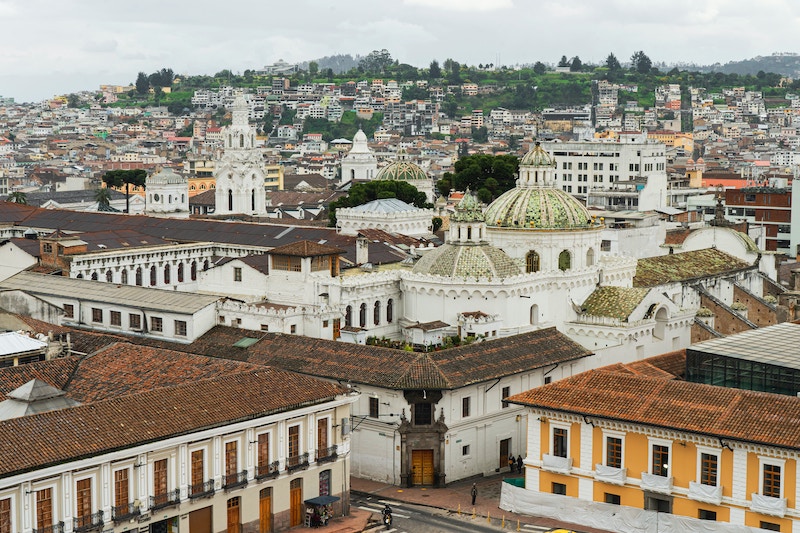
Crime rate in Quito
The most prevalent types of crime in Quito are petty theft, pickpocketing, and “gringo prices,” or scams where visitors get overcharged because vendors identify them as foreigners.
Drug-related crimes and robberies in crowded places are not unheard of, with thieves targeting unsuspecting individuals in crowded markets, bus stations, and other busy areas.
Tourists should be particularly cautious about their surroundings and belongings in these areas.
To put things into perspective, the crime rate in Quito is akin to some cities in the United States (and I am not lying!).
Nevertheless, it’s important to remember that while these crimes exist, they are not the everyday experience of all visitors. The majority of tourists enjoy a safe and pleasant stay in Quito, as the city boasts rich history, stunning architecture, and vibrant culture.
Speaking basic Spanish can go a long way in ensuring a safe and delightful journey in Quito!
Book one of the best Quito tours
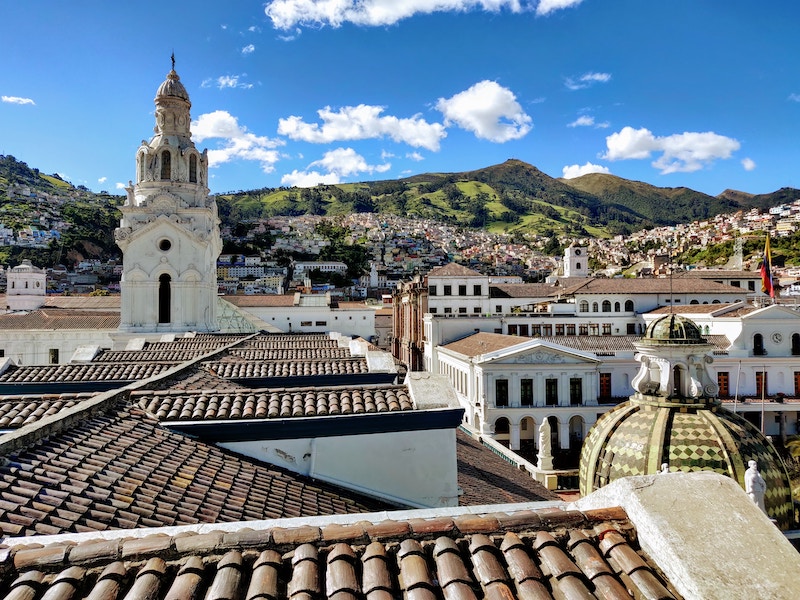
What are the Most Common Types of Crime in Quito?
Here I am going to show off the most common types of crime that occur in Quito.
- Pickpocketing: This is a common type of crime in Quito that often affects tourists, who may have their belongings stolen from them in public spaces.
- Robberies: These acts are typically perpetrated by groups and can occur during daylight hours, although they are more prevalent at night.
- Scams: A subtle form of crime where tourists are overcharged simply because they are identified as foreigners. To enhance your safety and avoid scams like fake taxi drivers, it is recommended to utilize ride-sharing services such as Uber in the area.
- Express kidnappings: While these are rare, be cautious while traveling alone and do not display any valuable items that could make you a potential target.
- Drug-related crimes: Neither this one is not common, instances of drug-related crimes have occurred in the city.
- Vandalism: Property crimes such as vandalism can occur, although they are not as common as the others on this list.
- Assault and armed robbery: Violent crimes are not the norm, but they do occasionally occur, particularly at night or in less frequented areas.
Get a travel insurance for your trip to Quito
👉 Safety Wing is one of the best insurance plans for long-term travelers and digital nomads that covers you in the event of stolen and lost luggage, hospital visits and other unforeseen circumstances. WorldNomads is one of the most popular travel insurance options that offers option for long and short-term travel.
Is Quito safe to walk at night?
Like most bustling cities, Quito has its share of neighborhoods that are best avoided after dark, particularly if you’re a tourist.
Although the city radiates a charming ambiance under the night sky, limit evening strolls and stick to well-lit areas teeming with people.
This isn’t to say that the city turns perilous with sunset, but adopting a cautious approach is part of any smart travel plan!
If you’re venturing out at night, consider using reputable taxi services or ride-sharing apps like Uber (unlike Colombia where it’s illegal to use Uber), which are both safe and convenient. These modes of transport not only ensure your safety but also save you from the hassle of navigating the city’s streets after dark.
There are also night buses operating in the city, but they are recommended only if you are familiar with the routes and stops.
➡️ Peru vs Chile: Which one should I visit?
Is it Safe to Walk in Quito During the Day?
During the day, many areas of Quito are safe to walk around, especially the tourist zones like the Old Town and La Mariscal. These districts bustle with activity, and their streets are typically crowded with locals, and tourists, and have police presence.
If you prefer not to walk or are traveling to less busy parts of the city, several alternative forms of transport are also safe and reliable.
Read: Chile vs Peru travel
Public buses are a common choice and can take you to various parts of the city at a low cost. Taxis and ride-sharing services like Uber are also widely available and can be a safer option if you’re traveling longer distances, particularly outside the city center.
Cycling is one of the most popular things to do in Quito, with dedicated bike lanes and bike-sharing services on the rise!
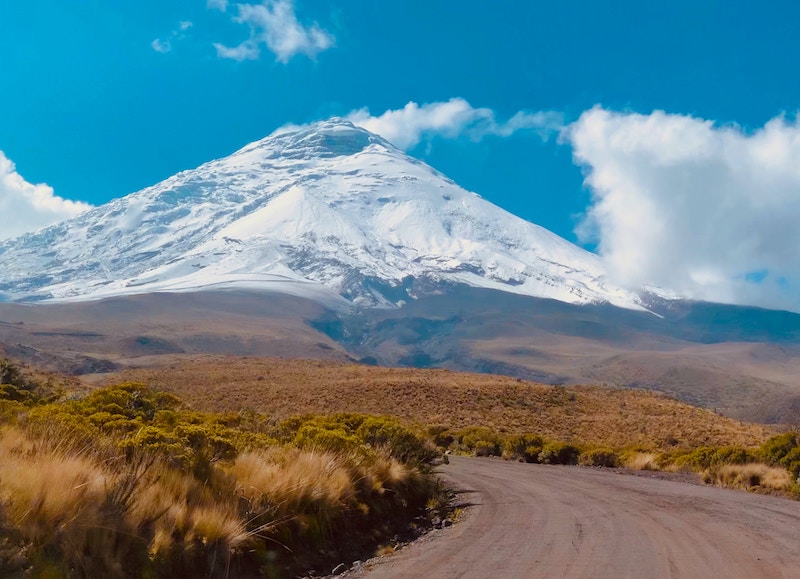
How Safe is Ecuador?
Ecuador, like any other country, has its share of safety challenges. It’s generally considered safe for tourists, but it’s crucial to be aware of certain issues.
Crime rates vary across different regions, with urban areas witnessing higher instances of petty theft, burglaries, and occasionally more serious offenses like express kidnappings and armed robberies.
The border areas, in particular, experience periodic political tensions and associated safety issues due to smuggling activities. If you plan to visit Ecuador’s borders with Colombia and Peru, stay up to date on travel advisories and local news.
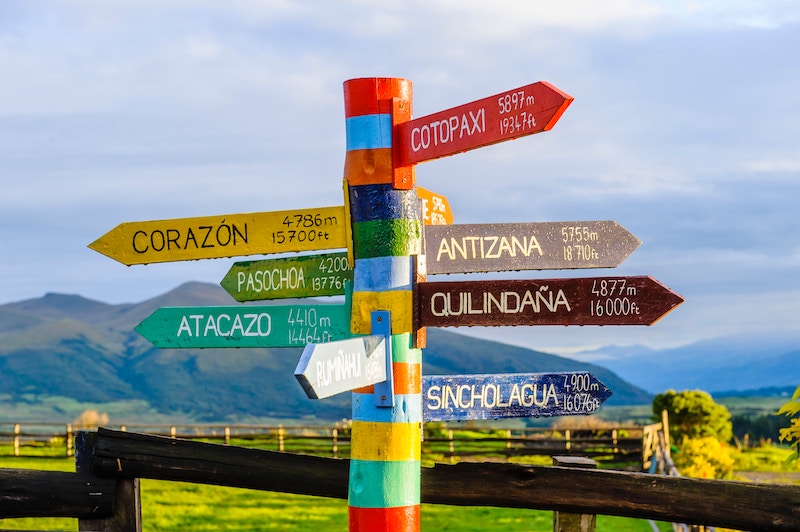
Natural disasters can pose significant safety risks too. Ecuador is located on the Pacific Ring of Fire and is prone to earthquakes and volcanic activity. Always stay informed about the current situation, especially if you want to visit areas near active volcanoes.
Ecuador’s diverse and wild natural landscapes, while beautiful, can also be hazardous. Hikers should be cautious of the risk of landslides and flash floods, especially during the rainy season.
Despite these challenges, millions of tourists visit Ecuador each year and enjoy safe and rewarding adventures.
What is Crime Rate in Ecuador?
Ecuador and its capital, Quito, face some challenges regarding crime. On a national level, Ecuador’s crime rate is higher due to the inclusion of all regions, that is, urban, rural, and border areas.
Cities, particularly larger ones like Guayaquil, contribute to national crime rates with higher instances of theft, robbery, and occasional violent crimes.
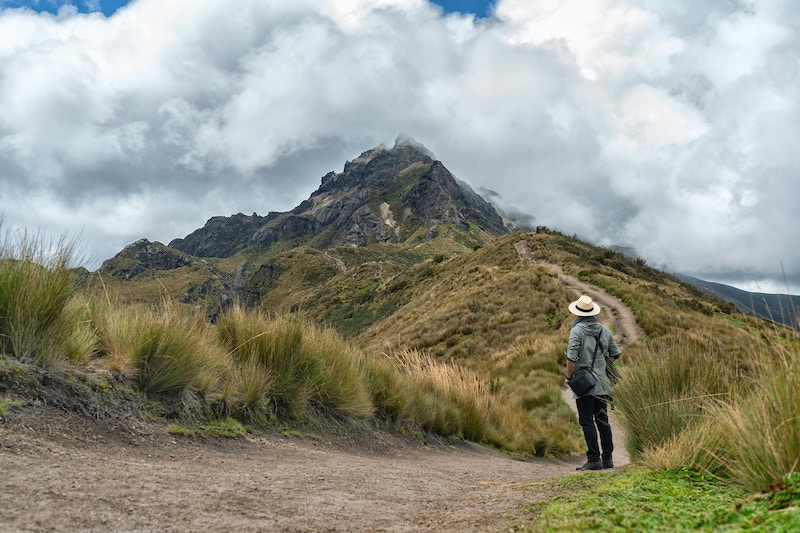
What are the Current Problems in Ecuador?
Here’s a closer look at some of the challenges facing the country.
Gang Activity in Guayaquil
Guayaquil, the largest city in Ecuador, has long been a hotbed for gang activity.
As per the US Department of State’s Overseas Security Advisory Council, “Guayaquil continues to experience gang-related violent crime (e.g., murder, drive-by shootings) and other criminal activities such as carjackings and theft.”
The report also mentions that gang crimes are on a high in the marginalized neighborhoods of the city. The government’s efforts to alleviate the situation have brought mixed results.
Poverty
According to the World Bank, in 2019, 25% of Ecuador’s population lived in poverty, and 8.9% in extreme poverty. Vulnerable groups, particularly indigenous and Afro-Ecuadorian communities, face a higher risk of poverty.
These statistics indicate that addressing poverty remains a pivotal challenge for Ecuador, necessitating robust social welfare programs and economic reforms.
Corruption
Corruption is another prevalent issue in Ecuador. According to the Corruption Perceptions Index, Ecuador ranked 93 out of 180 countries in 2020, which means the country has a corruption problem.
Allegations of corruption touch various sectors, including politics, business, and law enforcement, affecting the economy and undermining public trust in institutions.
These challenges present ongoing obstacles to Ecuador’s development.
Transportation Safety in Quito
When exploring the vibrant city of Quito, understanding transportation safety is key.
Generally, public transport in Quito is safe, reliable, and used by locals and tourists alike. The city’s public bus system is an affordable option for getting around.
For those preferring more convenience and comfort, ride-sharing services like Uber offer a safe and reliable alternative. The cost is slightly higher than public transport, but the convenience, comfort, and added safety can make this a worthwhile trade-off.
Are Taxis Safe in Quito?
Taxis are a popular mode of transportation in Quito and are
However, there have been cases of fake taxis operating in the city, particularly at night.
Use registered taxis with clear registration numbers and orange license plates to avoid trouble. If in doubt, ask your taxi driver for their license.
Quito Safety Tips
- Stay Informed About Your Surroundings: Whether you’re navigating the bustling streets of Quito or exploring the natural wonders of Ecuador, make sure you are aware of your surroundings. Keep an eye out for any unusual activity, and always keep your personal belongings close to you.
- Avoid Isolated Areas at Night: It’s best to avoid wandering alone in secluded areas, especially after dark. Stick to well-lit and crowded places whenever possible. Also, if you’re traveling to a new location, try to arrive while it’s still daylight.
- Use Registered Taxis: In Quito, always use registered taxis that are easily identifiable by their orange license plates and visible registration numbers. For added safety, consider using ride-hailing services like Uber, especially at night.
- Stay Updated with Travel Advisories: Regularly check travel advisories from credible sources like the U.S. Department of State or your country’s foreign affairs department. These advisories provide valuable information on current safety issues in Ecuador.
- Respect Local Customs and Laws: It’s important to remember that you are a guest in Ecuador, and as such, it is crucial to respect local customs and laws. It includes being mindful of dress codes, avoiding sensitive topics, and adhering to regulations regarding restricted areas or activities.
Quito Altitude Safety
At an elevation of 9,350 feet (2,850 meters), Quito is one of the highest capital cities in the world. The high altitude may cause some discomfort for visitors not accustomed to it.
Here are a few tips to ensure your safety while acclimating to Quito’s altitude:
- Stay Hydrated: Drink plenty of water to avoid dehydration, which can worsen the symptoms of altitude sickness.
- Take it Easy: Allow your body to adjust gradually by taking frequent breaks and avoiding strenuous activities in the first few days.
- Avoid Alcohol: Drinking alcohol may increase the effects of altitude sickness, so it’s best to limit your consumption until you are fully acclimated.
- Consult a Doctor: If you have a pre-existing medical condition or are concerned about the high altitude, consult your doctor before traveling to Quito. They can provide valuable advice on how to stay safe and healthy at high altitudes.
What Areas to Avoid in Quito?
Neighborhoods like El Panecillo, La Mariscal, and certain parts of Old Town can be less safe after dark due to higher crime rates. Avoid secluded parks and dimly lit areas, and always be alert for pickpocketing and bag snatching.
As a rule of thumb, avoid areas that are not frequented by locals or tourists.
On the other hand, numerous areas in Quito are safe and worth exploring.
The historical center, filled with beautifully preserved colonial architecture, museums, and churches, is generally safe during the day. La Carolina Park is a popular spot for a stroll or picnic. It’s always buzzing with activity and is well-patrolled by local police.
In northern Quito, the neighborhood of La Floresta is known for its vibrant arts scene and is filled with galleries, theaters, and trendy eateries. It’s a safe and lively area to explore, particularly during the day.
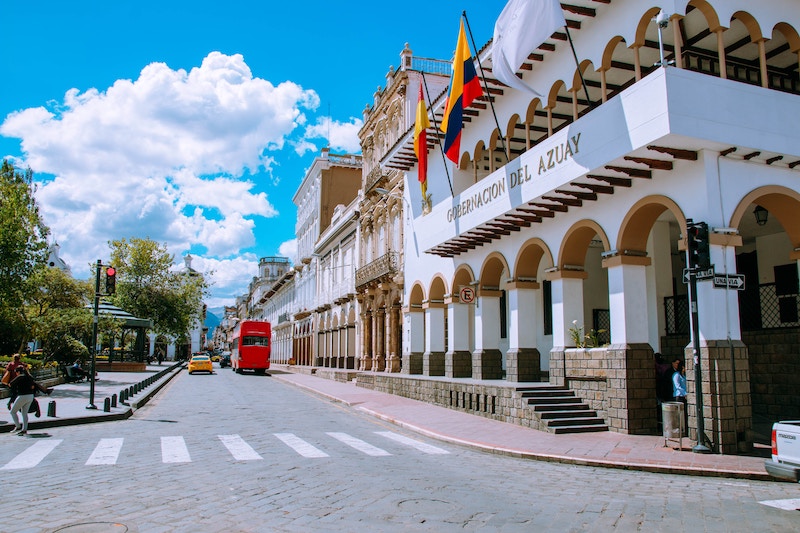
What Are the Safest Cities in Ecuador?
Ecuador is home to several safe cities that are welcoming to both residents and visitors alike.
Cuenca is one of the safest cities in Ecuador. Known for its charming colonial architecture and tranquil pace of life, Cuenca boasts a lower crime rate than the national average, making it a popular spot for expats and tourists.
Loja, nestled in the Andes Mountains, is another city known for its safety. The city’s crime rate is low, and it’s relatively free from the petty crime that can plague more tourist-heavy areas.
The coastal city of Salinas is also considered safe, especially in the context of beach towns in Ecuador. While petty crime does occur, as it does in any city, the instances are relatively low, and violent crimes are rare.
If you’re drawn to the Amazon, the city of Tena is a safe base for exploration. Known as the “cinnamon capital” of Ecuador, Tena has a peaceful, small-town vibe and a low crime rate.
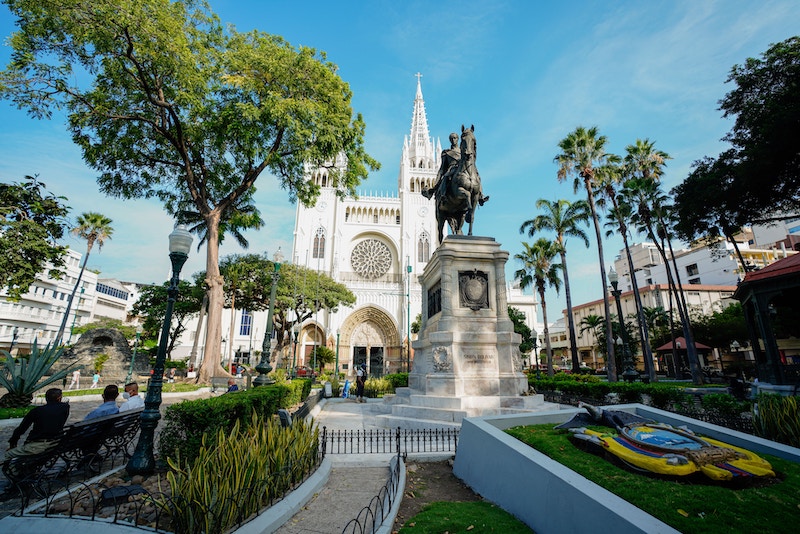
Is Guayaquil Safe?
As Ecuador’s largest city and the country’s main port, Guayaquil has its share of safety concerns, much like any other major city.
Historically, it had a reputation for high crime rates, but concentrated efforts to revitalize and modernize the city have significantly improved its safety scenario over the years.
Today, tourist-friendly areas like Malecón 2000 and Las Peñas neighborhood are generally safe, bustling with people at all times, and patrolled by local law enforcement.
How to Stay Safe in Guayaquil?
While Guayaquil has made significant strides in becoming a safer city, it remains crucial to maintain vigilance and awareness of your surroundings, particularly after dark.
It is advisable to refrain from walking alone at night in Guayaquil, especially in less touristy areas. Instead, consider utilizing ride-hailing services or taxis for your transportation needs.
What are the Safest Neighborhoods in Quito?
Here are some of the safest neighborhoods in Quito:
- La Carolina: Located in northern Quito, La Carolina is known for its large park, bustling commercial area, and upscale residential buildings. It’s a popular spot for families and expats, and it’s relatively safe to walk around, particularly during the day.
- La Floresta: This trendy neighborhood is known for its bohemian vibe and has become a hub for artists, musicians, and foodies. It’s generally safe to walk around during the day, with plenty of cafes and boutiques to explore.
- Cumbayá: Located just outside of Quito’s main city center, Cumbayá is a tranquil and affluent suburb popular with expats and wealthy locals. It has a low crime rate and is home to many international schools, making it an ideal neighborhood for families.
- Bellavista: This residential area in northern Quito is known for its lush green spaces and tranquil atmosphere. It’s safe to walk around during the day, with many local restaurants and cafes to explore.
- Old Town: While this area may be known for its higher crime rates after dark, it is generally safe to visit during the day. Filled with charming colonial architecture and cultural landmarks, it’s worth exploring in the company of a knowledgeable guide or a group.
Best Hotels in Quito:
For those planning a visit to Quito, here are three excellent hotel options to consider, catering to a range of budgets:
- Budget – Hostal Juana De Arco: For those on a budget, the Hostal Juana de Arco offers a comfortable and affordable stay. Located in the city, this hostel is within walking distance of many of Quito’s main attractions. It offers free Wi-Fi, a shared lounge, and rooms equipped with private bathrooms.
- Mid-budget – Hotel Boutique Portal de Cantuña: Offering a blend of comfort and value, the Hotel Boutique Portal de Cantuna is a great mid-range option. It’s located in Quito’s historic district, just a short walk from the city’s main square. The hotel features beautifully decorated rooms, a restaurant, and a rooftop terrace with stunning views of the city.
- Luxury – Casa Gangotena: For those seeking luxury, Casa Gangotena is the perfect choice. This stunning hotel is in a restored historic mansion in Quito’s Old Town, offering elegant rooms, a gourmet restaurant, and a beautiful garden. The hotel’s prime location allows guests to explore the local attractions with ease.
Safety in Quito: FAQ’s
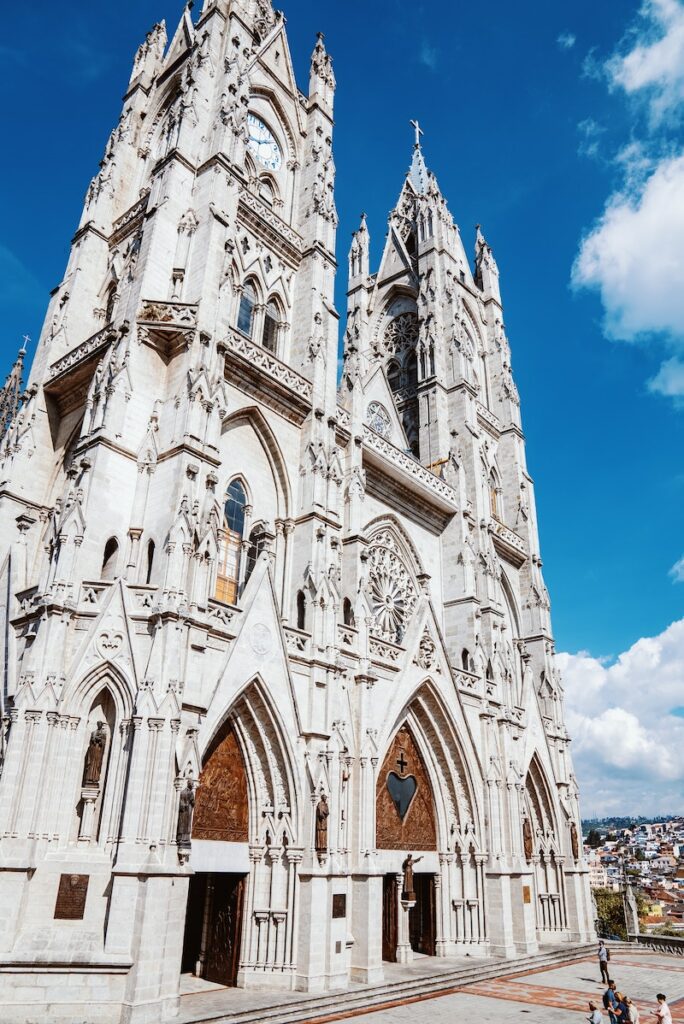
Is Ecuador safe for Americans?
Ecuador is generally safe for American travelers, and it’s important to note that the country’s crime rates are lower compared to many U.S. cities.
The U.S. Department of State has even classified the safety risk in Ecuador as similar to that in most other travel destinations.
Is Quito Safe at Night?
While Quito is generally considered safe at night, it is recommended to exercise the same caution that you would in any big city as mentioned above.
Is Quito Safe to Live?
Yes, Quito is generally safe to live in, especially if you observe basic safety precautions. The city’s residential areas are often peaceful, and the locals are friendly.
Is Quito Safe for Solo Female Travelers?
Yes, Quito is generally safe for solo female travelers, but like any other destination, it requires a degree of vigilance and common sense.
Stick to well-traveled areas, avoid isolated places after dark, and be aware of your surroundings. It’s also beneficial to learn a few basic phrases in Spanish to help navigate the city.
Is Uber Safe in Quito?
Yes, Uber is considered safe in Quito.
It’s a preferred choice for many travelers due to its convenience, transparency in pricing, and the fact that you can see the driver’s information and ratings before starting your ride.
Is Quito Airport Safe?
Yes, Quito’s Mariscal Sucre International Airport is generally considered safe. It is modern, well-maintained, and has a strong security presence.
As in any public place, it’s prudent to be watchful of your belongings as pickpocketing can occur. Overall, travelers can expect a safe and comfortable experience at this airport.
Final word: Is it Safe to Travel to Quito Now?
Ecuador and its capital Quito, like any other destination, present their own unique challenges and safety concerns.
However, with a bit of planning, awareness, and common sense, you can ensure a safe and enjoyable trip!
This article was contributed by Giorgy from G-Extreme Travel
